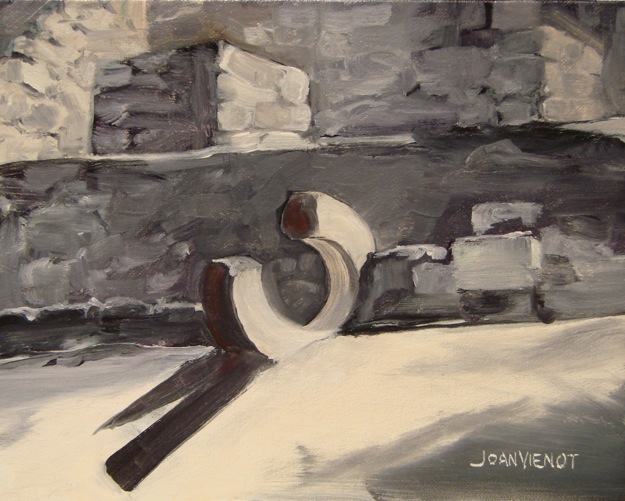
 I spent a week in Mexico in mid-December. Ruins from ancient civilizations fascinate me, and the ruins at Coba were no exception. A boy there drove our big tricycle-tour-carriage to one of the pyramids, Nohoch Mul, one of the few in Mexico that visitors are still allowed to climb. Nohoch Mul is the tallest pyramid in the Yucatan Peninsula, 138′. At the top, you can see out over the Mexican jungle to other points breaking the treeline in the distance, which I presume are other pyramids. There was a structure on the platform at the top, with a short doorway which was screened closed. The walls inside were black, like many fires had been burned inside. It felt spooky, and I wondered if sacrifices had been made there — maybe some spirits were still hanging around.
I spent a week in Mexico in mid-December. Ruins from ancient civilizations fascinate me, and the ruins at Coba were no exception. A boy there drove our big tricycle-tour-carriage to one of the pyramids, Nohoch Mul, one of the few in Mexico that visitors are still allowed to climb. Nohoch Mul is the tallest pyramid in the Yucatan Peninsula, 138′. At the top, you can see out over the Mexican jungle to other points breaking the treeline in the distance, which I presume are other pyramids. There was a structure on the platform at the top, with a short doorway which was screened closed. The walls inside were black, like many fires had been burned inside. It felt spooky, and I wondered if sacrifices had been made there — maybe some spirits were still hanging around.
Our tricycle guide took us to some of the other structures, including a round temple-pyramid and a Mayan ballcourt. After we finished our tour, we realized there was another, smaller ball court, near the entrance to the area.
I found the ballcourts to be particularly fascinating. I could almost hear the cheering for the teams of players trying to pass a ball through the stone rings in the center of the sloped side-walls. The game was played recreationally, but also ceremonially when it is thought that the captain of the losing team gave up his head.
One of the rings was broken at the second ball court, and its jagged edges and sharp shadow shapes intrigued me.
As often happens when I am first starting a painting, the initial paint-drawing frustrated me and I almost quit. There was very little color to the ruins — just the black, white, and gray of the rocks and mortar. But I didn’t want to make it a black-and-white painting. Near-black, and gray can be made from many colors. I wanted the areas lit by the sun to be warm, and the shadows cooler, so I chose an orange tint for the sunny rocks, and I used cobalt violet mixed with orange for the shadowed areas. Where I needed it to be even cooler, I added a little viridian green. The broken stone ring was the obvious focal point, being so very different from the planes and shapes of the rest of the structure. To bring even more attention to it, I added a warmer gray to its shadows, with more orange. The shadows cast from the ring are in sharp contrast to the sunlit area, as opposed to the shadows from the trees overhead, which have soft edges.
Most of my images are available for purchase. Contact me if you are interested. — Joan Vienot
